To say that it has definitely been roller coaster few weeks here in the Gator Nation would be an understatement. With Coach Muschamp all but written off after the Mizzou debacle and facing what appeared to be a hot Georgia team on a cold, windy day, the season and all that hangs on it appeared to be on life support and deep in a coma. And then there was the World’s Largest Outdoor Cocktail Party. Outside of the 2009 and 2012 LSU games, I really can’t recall a Gator offensive line just taking over and physically mauling our opponent play after play after play in this manner where they knew what was coming and were helpless to stop it. It happened against UGA this past weekend, though. When they tried overloads, we spotted it and ran counters. When they tried loading up the middle, we ran zone, picked up their blockers, bounced the run, and gashed them. When they played base, they got physically manhandled for 5-6 yards per rush, effectively death by 1000 paper cuts.
And all this, for the most part, using only two basic runs. The first of which, inside zone, I’ve discussed before. The second is where it gets interesting. While we’ve been running gap runs all year, it’s usually Power O into the weak side of the formation, pulling the strong side guard and the B-position. Saturday was a little different, though.

When you draw up our traditional base power play, normally the back is aligned pre-snap on the strong side of the formation and we run the play to the weak side, as in the diagram below, pulling and kicking out with the guard and leading with the B-back through the hole off tackle. We tend to align similarly when running zone, which can confuse the gap assignments for the defense and force them to key on something other than line or back movement.
In this case, however, we set them up for power to the weak side and throw a wrench in their plans. Rather than running Power O to the weak side of the formation, we run a counter play strong side and catch Georgia in a perfect misalignment overloaded to the weak side of the formation.
What’s worth pointing out is just how perfectly this play was executed almost all the way around. The offensive line actually slow plays this, giving a little ground and letting Georgia declare their line slant and get into their gaps before blocking down and sealing them out of the play, which is a crucial element in effectively running a counter play. DJ Humphries actually gets his hands on both linebackers, Thurman pulls and leads about as well as you can ask for, and the blocking from Robinson and Pittman, as has been pointed out by many including Gary Danielson, was spectacular.
It’s worth noting also that both running backs were effective taking this play for sizeable gains throughout the game. While this is a constraint play rather than a base play, as it is designed to keep a defense honest, I think you’ll see it moving more into the bread and butter category going forward, as we did against Vandy.

On to Vanderbilt
Vanderbilt appeared to be a team we matched up well with. They were not strong against the run, bad against the pass, and led the league in turnovers. Common thinking was we would come in and run the ball down their throats just like we did Georgia and Treon would have another easy game. While we did end up running very successfully on them to the tune of over 200 yards, it took a little while to get going, and it is worth looking at why.
One thing that is obvious is that Vandy watched film on us. They determined that:
A) They would come in and largely play a 2 gap 3-4 front allowing their 3 down linemen to eat up 5-6 blockers. They would not declare a gap and would not try to get penetration, but would not give up ground.
B) Those freed linebackers would focus on staying up to stop the run first and ignore the quarterback on the read option, crashing the back on every inside run
C) Run support would also come from 1-2 walked up safeties, ensuring adequate numbers in the box on every down.

It worked for a while, as the Gator O-line line got a very inconsistent push and the Vandy linebackers flew all over the field. Those same runs that seemed to pop every other play for a 7-10 yard gain against Georgia were now going for 0-4 yards. That strategy has a drawback, though, in that it leaves large voids in the passing game with little help from the linebackers. It was obvious that Treon was going to have to put the ball in the air to win this game.
Did he ever deliver! While not a statistically overwhelming game, as the coaches continued to feed Treon more, he showed more and more aptitude for the passing game, displaying touch, accuracy to the outer thirds and on the deep ball, and great field awareness. One particular passing play I’d like to call attention to was his long completion to Quinton Dunbar in the 4th quarter.

This is another concept that has routes in the Air Raid system, as you can see from this cut from Mike Leach’s Oklahoma playbook below:
Roper has taken this play and run it as a play action look out of essentially a double tight end set, with the progression being Go/Post to Cross, to Dig to Checkdown, essentially across the field.
As the primary receiver (X), Dunbar’s job is basically going to be to get vertical and behind the corner as quickly as possible, and if there is one safety playing deep he’ll break inside slightly on a skinny post into the alley. Westbrook as the Y will run under the Sam linebacker but over the Mike and Will and settle into the first hole past the Mike if he reads zone coverage. If he has a linebacker playing man running with him, he’ll run a square in. The Z receiver will run a dig, which is a deep in with a speed cut, and allow the tight end on the crosser to clear out for him.
Vandy in this instance is playing a variation on quarters coverage, which we’ll see below:
The corners will take any vertical release on their side, and the linebackers are responsible for anything underneath. The safeties have a responsibility to read the Y and B receivers. The Free Safety will take whoever pushes downfield and breaks inside, with a secondary responsibility of doubling X with the corner. The Strong Safety will take whoever pushes down the seam, and will double Z if there is no vertical release to the seam.
In this case, Kurt Roper’s call plays Vandy’s defense like a fiddle. The field corner takes the Z receiver, the Strong Safety reads the release of Y and passes him off to the Free Safety and looks to pick up the dig route from Z. The boundary corner anticipates playing run support when he should understand he has no help behind him on a vertical release and bites on the wide play action.
Treon smartly hangs the ball out there with plenty of air and Dunbar is able to run underneath it, only being tackled by his own two feet after a huge gain.
Plays like this have been there for the taking all year. We’ve seen similar defensive looks and receivers getting open against them dating back to the Tennessee game, but have been unable to capitalize consistently until Saturday. As a result, the offense we’ve seen the last few games really hasn’t been Kurt Roper’s offense. We’ve had his base formations, personnel groups, and zone and gap runs, but the downfield passing game is what really makes everything take off. I’d look for downfield shots to continue to be called with regularity as long as our opponents continue to walk up their safeties and overplay the run, and yardage to continue to pile up both on the ground and through the air as a result.



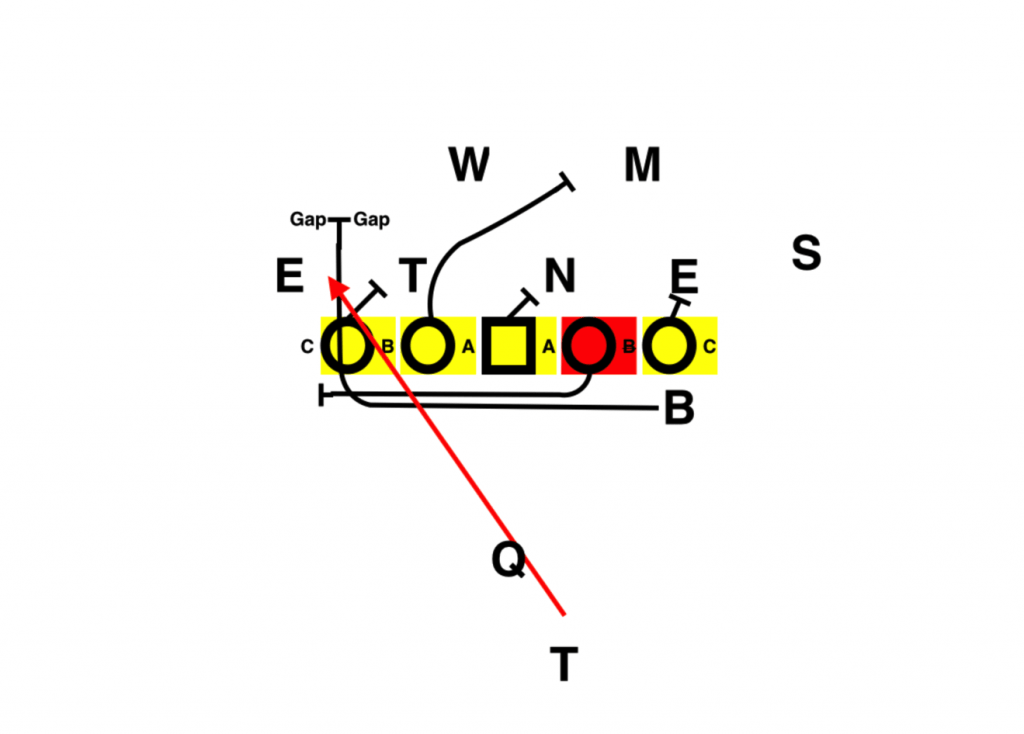
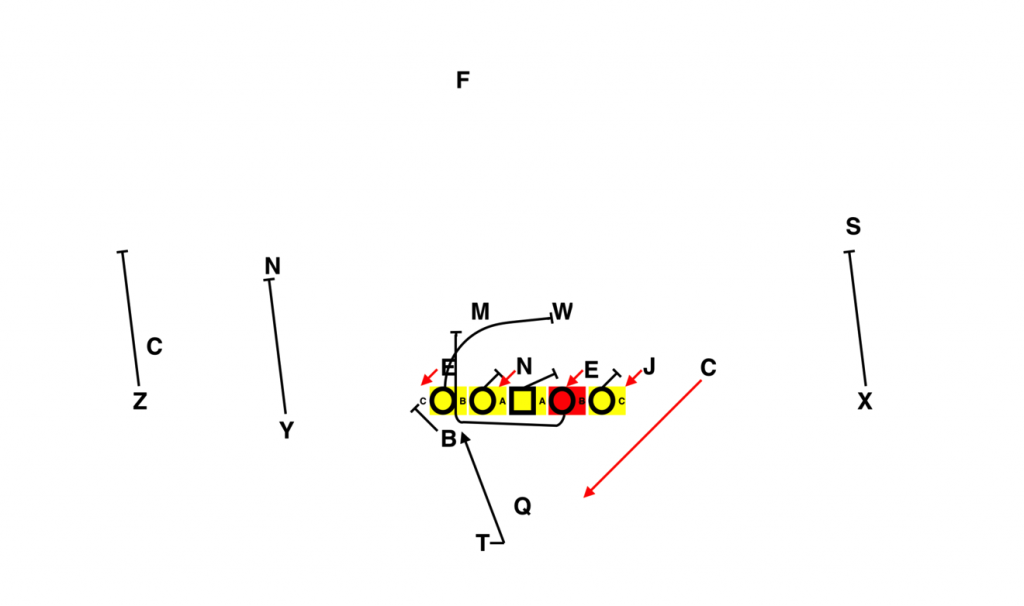
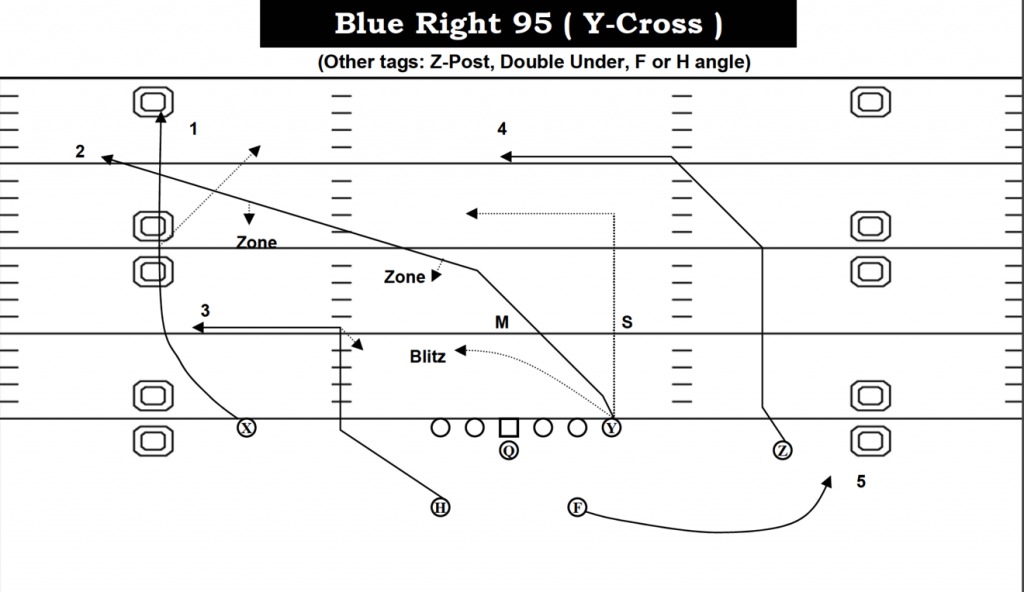
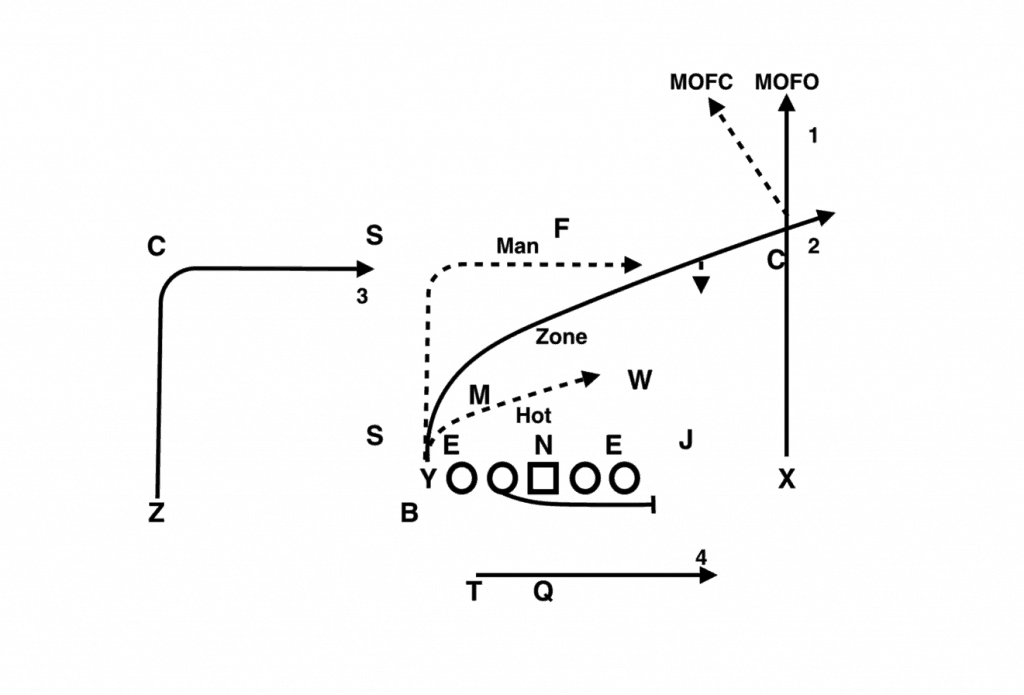
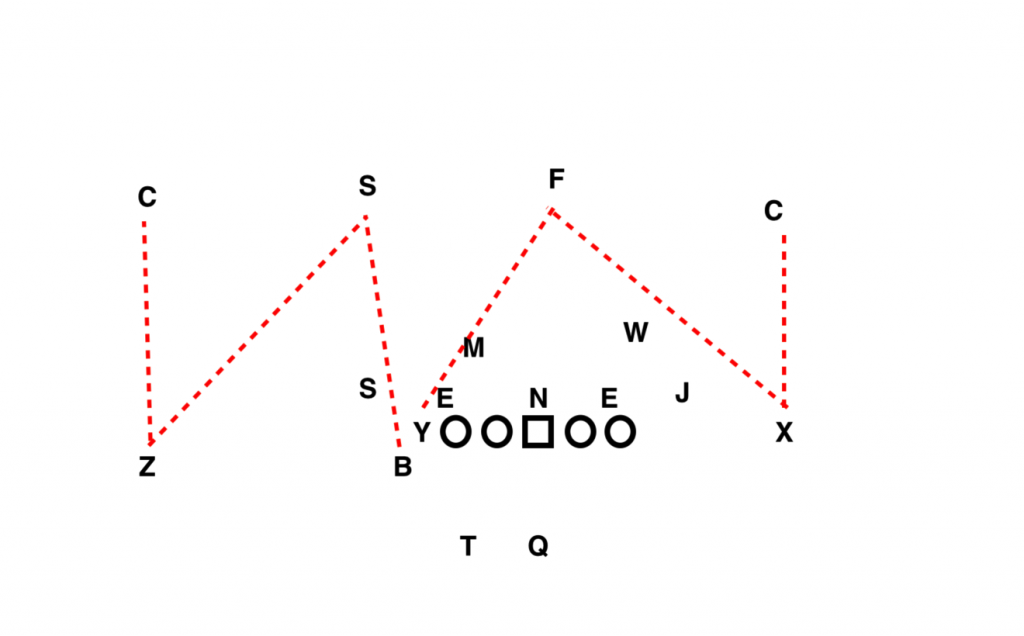
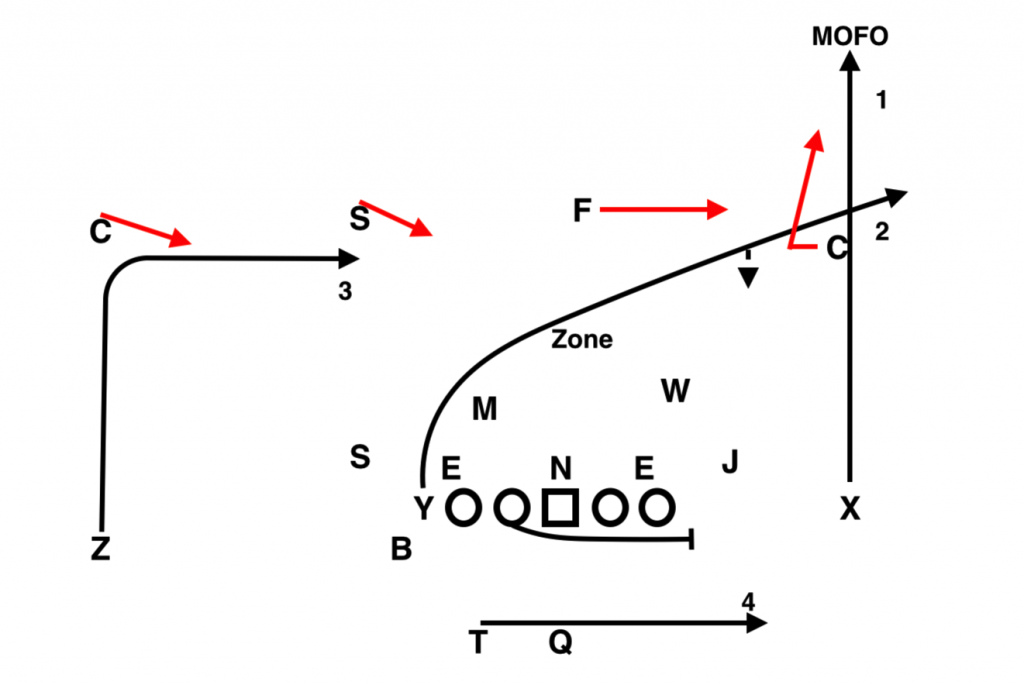
Good stuf Tom!